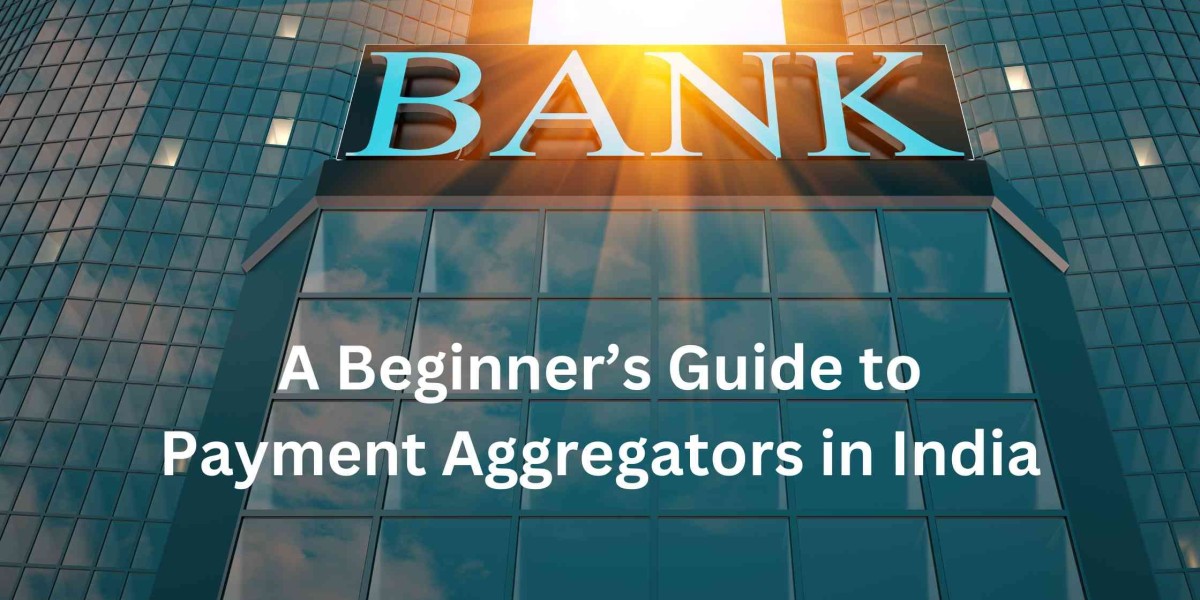Digital payments have become an essential part of daily life in India, especially with the rise of e-commerce and online transactions. For businesses, offering easy and secure payment options to customers is crucial. This is where payment aggregators come into play. Payment aggregators are intermediaries that facilitate online payments between merchants and customers by connecting various payment methods such as credit cards, debit cards, UPI, and net banking.
If you're new to this concept, this guide will help you understand what payment aggregators are, how they work, and the different types of licenses required in India to operate in the payments ecosystem.
What is a Payment Aggregator?
A payment aggregator is a service provider that allows businesses to accept various payment methods without needing to set up multiple accounts with individual banks or payment processors. They aggregate all the payments and handle the entire transaction process, from collecting funds to transferring them to the merchant's account. Payment aggregators provide a one-stop solution for managing online payments, offering features like fraud detection, security, and quick transaction processing.
How Do Payment Aggregators Work?
- Customer Chooses a Payment Method: When a customer makes a purchase online, they choose their preferred payment method (e.g., credit card, UPI, or net banking).
- Transaction is Processed: The payment aggregator processes the transaction by connecting with the customer’s bank or payment service provider.
- Funds Are Settled: Once the payment is approved, the aggregator collects the funds and, after deducting their fees, transfers the amount to the merchant’s account.
Payment aggregators make the process smooth for both merchants and customers, offering a secure and efficient way to handle online payments.
Key Licenses in the Indian Payment Ecosystem
To operate in India’s payment ecosystem, businesses need to obtain specific licenses from regulatory bodies like the Reserve Bank of India (RBI). Here's a look at some important licenses and their processes:
1. FFMC License Process in India
What is an FFMC License?
Full-Fledged Money Changer (FFMC) licenses allow entities to deal in foreign exchange for various purposes, such as exchanging currencies for travel or business. This license is necessary for payment aggregators that wish to handle foreign currency transactions. FFMC License Process in India Involves -
Steps to Obtain an FFMC License:
- Eligibility Check: The company must be registered under the Companies Act, 2013, and have a minimum net owned fund of ₹25 lakh.
- Application Submission: Submit an application to the Foreign Exchange Department of the RBI with the required documents, including a business plan, details of the promoters, and financial statements.
- RBI Review: The RBI reviews the application, conducts background checks, and evaluates the business plan.
- Approval and License Issuance: If approved, the RBI issues the FFMC license, allowing the entity to start foreign exchange operations.
2. Payment Bank License Process in India
What is a Payment Bank License?
A Payment Bank License Process in India allows companies to set up payment banks that can accept deposits, provide remittance services, and offer mobile payments. However, they cannot provide loans or issue credit cards.
Steps to Obtain a Payment Bank License:
- Eligibility Criteria: Companies, individuals, and NBFCs with a strong financial background can apply. The minimum paid-up capital required is ₹100 crore.
- Application Submission: Submit the application to the RBI with details of the company’s financials, business plan, and promoters’ information.
- RBI Review: The RBI conducts a thorough review of the application, including a background check of the promoters.
- Approval and License Issuance: Once approved, the RBI issues the license, and the entity can start operating as a payment bank.
3. Payment Gateway License Process in India
What is a Payment Gateway License?
A Payment Gateway License Process in India is required for companies that provide payment processing services for e-commerce sites, facilitating transactions between customers and merchants.
Steps to Obtain a Payment Gateway License:
- Eligibility Criteria: The company must be registered in India with a minimum paid-up capital requirement as specified by the RBI.
- Application Submission: Submit an application to the RBI, including a detailed business plan, financial statements, and details about security measures.
- RBI Evaluation: The RBI evaluates the security measures, infrastructure, and business model to ensure compliance with regulations.
- Approval and License Issuance: After approval, the license is granted, allowing the company to start providing payment gateway services.
4. Peer to Peer Lending License Process in India
What is a Peer to Peer Lending License?
Peer to Peer (P2P) lending platforms connect borrowers and lenders directly. To operate legally in India, P2P lending platforms must obtain a Peer to Peer Lending License Process in India from the RBI.
Steps to Obtain a P2P Lending License:
- Eligibility Criteria: The platform must be registered as an NBFC and have a minimum net owned fund of ₹2 crore.
- Application Submission: Apply to the RBI with detailed business information, financial data, and operational plans.
- RBI Review: The RBI reviews the application to ensure the platform meets all regulatory requirements.
- Approval and License Issuance: Once the review is complete, and the RBI is satisfied, the P2P lending license is granted.
5. Prepaid Wallet License Process in India
What is a Prepaid Wallet License?
Prepaid wallets are digital tools that allow users to store money for online purchases. A Prepaid Wallet License Process in India is required to offer these services, and it is regulated by the RBI.
Steps to Obtain a Prepaid Wallet License:
- Eligibility Criteria: The entity must be incorporated in India and meet the capital requirements set by the RBI.
- Application Submission: Submit the application to the RBI, including a detailed plan on how the wallet will operate, security measures, and compliance details.
- RBI Evaluation: The RBI evaluates the application, focusing on security, risk management, and operational plans.
- Approval and License Issuance: After approval, the entity receives the license to offer prepaid wallet services.
Conclusion
Understanding payment aggregators and the various licenses required in India is crucial for anyone looking to enter the digital payments space. Payment aggregators simplify the process of accepting multiple payment methods, making transactions smoother for businesses and customers alike. However, obtaining the right licenses is key to operating legally and securely in the payments ecosystem. Whether it's a Payment Bank License, FFMC License, Payment Gateway License, P2P Lending License, or Prepaid Wallet License, each plays a vital role in shaping the digital payments landscape in India.
By navigating the licensing processes effectively, businesses can tap into the growing digital payment market in India, ensuring a seamless and secure experience for their customers.








